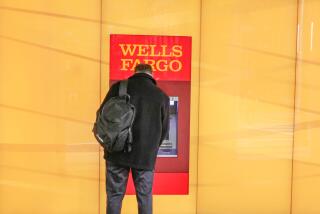Many Times, It’s the Average Joe Topping the List at Banks
- Share via
Ranking bank customers by profitability may sound harsh, but the trend could produce surprising winners: some lower- and middle-income families.
It turns out that customer profitability isn’t as closely linked to wealth and account balances as banks have traditionally thought, analysts and bank officials say.
In fact, when ranked by pure profitability, many ordinary families make banks’ lists because those customers tend to concentrate most of their financial accounts at a single bank, or are more likely to pay fees on a regular basis.
“At one bank, the fourth-most-profitable customer at a particular branch was someone who had an average monthly balance of only $8,” said Mick Meffert, director of business development at PeopleSoft, a Pleasanton, Calif.-based consulting firm. Because the customer kept such a low balance, he was more likely to incur bounced-check fees and failed to maintain a balance high enough to avoid the monthly service charge on his checking account, Meffert said.
Officials at Bank of America, Wells Fargo and Sanwa Bank confirm that their lists of most-profitable customers include some surprising names.
“You can’t tell a customer’s value to the organization by the way they dress,” said Les Biller, chief operating officer at Wells Fargo.
When Sanwa first compiled its list of “A” customers, branch managers were shocked to discover they didn’t recognize many of the names, said Mike Vantrease, who heads the company’s call center.
The most profitable customers weren’t always prominent business leaders or wealthy retirees. Instead, many first-time home buyers proved to be more valuable to the bank because home loans are among the most profitable products a bank can sell.
“It was an incredible learning experience for managers,” Vantrease said.
Though wealthier customers maintain higher balances, their accounts often can cost more to service. A well-to-do widow who visits the bank each week to check on her $40,000 certificate of deposit may cost the bank much more than a dual-income couple who don’t have much money, but do all of their banking online.
Yet typically, it’s the wealthy widow that branch employees greet by name, while the couple may feel like strangers if they visit a branch.
Robert Hall, president of Dallas-based Customer Analytics, predicts profitability scoring will lead to a long-overdue redistribution of customer service at banks.
“A lot of the old stereotypes turn out to be not very accurate,” Hall said. “As a result, some customers haven’t been treated as well as they should have.”
More to Read
Inside the business of entertainment
The Wide Shot brings you news, analysis and insights on everything from streaming wars to production — and what it all means for the future.
You may occasionally receive promotional content from the Los Angeles Times.









